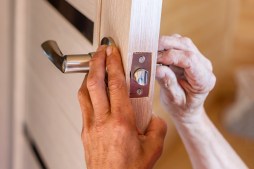Common Causes of Low Water Pressure and How to Fix Them

Low water pressure can be a frustrating issue that affects your daily activities, from showering to washing dishes. Understanding the common causes of low water pressure and knowing how to address them can help restore your home’s water flow efficiently.
Identifying the Causes of Low Water Pressure
Low water pressure often results from a variety of factors including plumbing leaks, clogged pipes, or issues with your municipal water supply. Before attempting any repairs, it’s important to diagnose the exact cause by checking multiple faucets in your home to determine if the problem is localized or widespread.
Checking for Leaks and Damaged Pipes
A common cause of low water pressure is leaks in your plumbing system. Inspect visible pipes for any signs of moisture or corrosion. Additionally, check under sinks and around appliances for leaks. If you suspect hidden leaks, consider consulting a professional plumber who can use specialized equipment to detect them.
Cleaning or Replacing Clogged Fixtures and Pipes
Mineral buildup inside fixtures such as faucets, showerheads, and valves can restrict water flow. Removing these fixtures to clean out mineral deposits or replacing old components often improves pressure significantly. For clogged pipes caused by sediment buildup, professional pipe cleaning might be necessary.
Inspecting Your Home’s Pressure Regulator
Many homes have a pressure regulator valve that controls incoming water flow. If this valve malfunctions or becomes stuck in a closed position, it can reduce overall pressure in your house. Testing and adjusting this valve may resolve the issue; however, it’s best handled by an experienced plumber.
Contacting Your Water Supplier
Sometimes low water pressure originates outside your home due to municipal supply problems like maintenance work or main line breaks. Contacting your local water utility provider can give insights on whether there are known issues affecting supply in your area.
By identifying the root causes and taking appropriate action—whether it’s fixing leaks, cleaning fixtures, adjusting regulators, or consulting professionals—you can effectively diagnose and repair low water pressure issues in your home. Maintaining good plumbing health ensures consistent water flow for all your needs.
This text was generated using a large language model, and select text has been reviewed and moderated for purposes such as readability.


